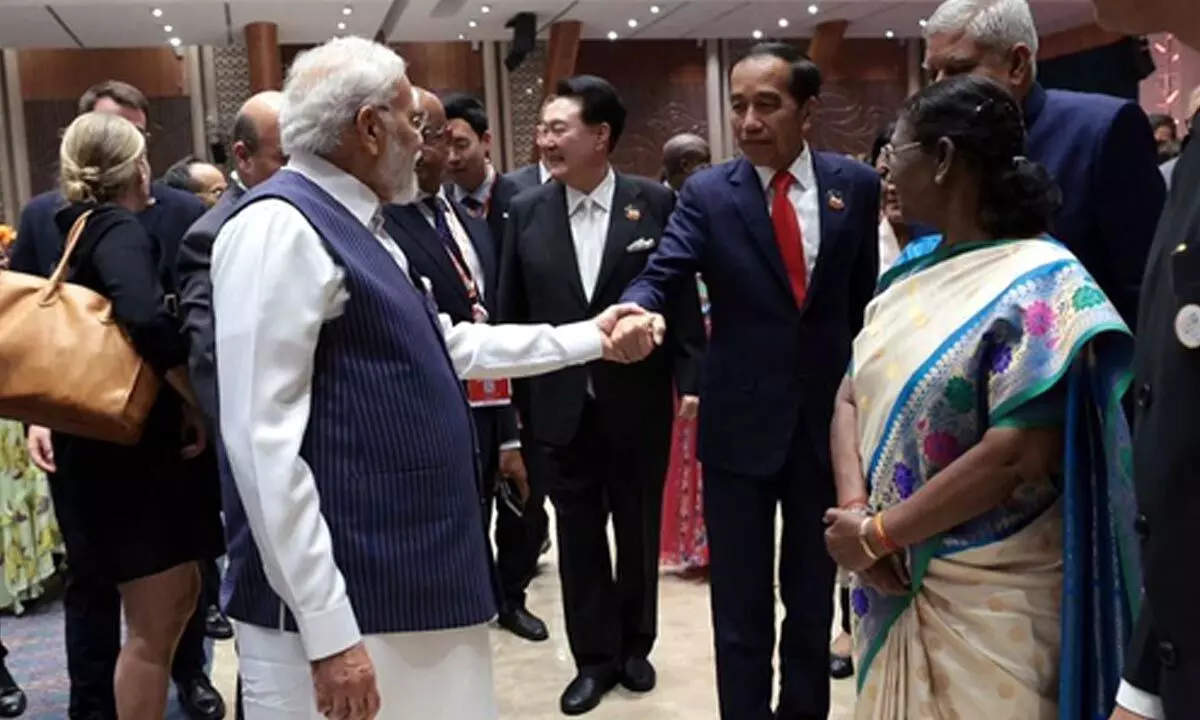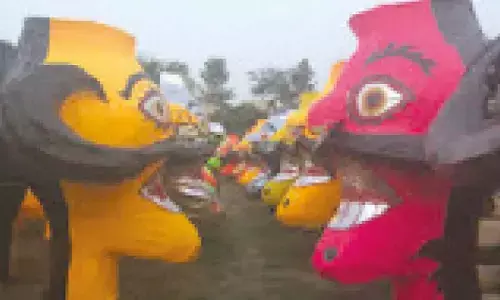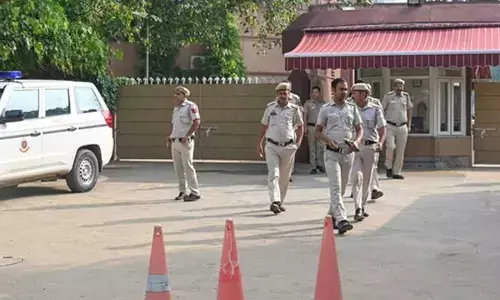From Meluha to India, the many names of 'Bharat' across centuries
Share :

When President Droupadi Murmu sent out invites for the dinner hosted by her at the G20 Summit, she described herself as the 'President of Bharat' and set off a heated discussion that may have abated temporarily, but is headed for a vociferous revival.
New Delhi: When President Droupadi Murmu sent out invites for the dinner hosted by her at the G20 Summit, she described herself as the 'President of Bharat' and set off a heated discussion that may have abated temporarily, but is headed for a vociferous revival.
Even Prime Minister Narendra Modi chose 'Bharat' as his country name at the G20 Summit. Rumours, predictably, are rife that 'Republic of India' and 'We the People of India' are heading for a name change, but it may help to be reminded that India has had many names over the centuries of its existence.
Every name India has ever had historically, had a specific connotation and legitimacy. India, as we have known it for decades, is a name most popularly used by the British, but its origin goes way back to the times when the concept of colonising did not even exist.
Over two millennia ago when the Persians reached the Sindhu River (later anglicised as Indus), they mispronounced it as 'Hindu', and so the land beyond the 'Hindu' came to be known as Hindustan, and its people began to be called Hindustani.
Hindustan was the preferred name for the subcontinent used by the Persians, Greeks, Delhi Sultans and the Mughals, and the name not only remains in use, but also continues to carries a lot of cultural weight, especially with regard to music and literature.
Going back to ancient references to India, it was around 300 BCE when Megasthenes, the ambassador of the Greek ruler Seleucus Nikator I in the court of Chandragupta Maurya, wrote of India in his book 'Indica', which survived in fragments reconstructed by modern historians.
Around 200 BCE, Chanakya in his 'Arthashastra' refers to the Indian subcontinent as 'Jambudweepa', inspired by the jamun fruit, native to this region and climate. 'Jambudweep' follows and refers to the combined Aryavarta and Dravida, two regions marked by a riparian divide.
From the time of the Vedas, the seers of the age called the northern half of the subcontinent Aryavarta and the southern half Dravida. Both these regions are recorded in Manu Smirti and the Puranas, where Aryavarta (meaning 'the land of the noble') is described as the region that stretches from the Himalayas in the north to the Vindhyas, which stretch from the modern-day Gujarat to Madhya Pradesh, on to Varanasi, and from the Bay of Bengal to the Arabian Sea.
Dravida is said to have been mentioned as the land towards the south where three great bodies of water conflate: Indian Ocean, Arabian Sea and Bay of Bengal. The name Dravida is a 'sandhi' word that combines 'dravya' (meaning water) and 'vida' (a place of meeting).
With more rulers came more names: Nabhivarsha, Ilavativarsha and Bharatavarsha, to name a few. Bharatvarsha, however, is a much older name than Bharat, which is now a popular alternative name for India. It is said to have existed between the first and ninth centuries BCE.
Bharat is a name that finds mention in the much older Rig Veda (circa 1500 BCE). It mentions a Bharata clan as the principal tribe of the region, which is now north India.
Additionally, Bharat follows from king Bharata, heir to the Kuru dynasty, and the son Dushyant and Shakuntala, thereby connected to the epic Mahabharata.
Going further back, there is Meluha or Melukhkha, the Sumerian name of a prominent trading partner of the region in the Middle Bronze Age. Although Meluha has not been conclusively identified, most scholars associate it with the Indus Valley Civilisation.
Sumer is the earliest known civilisation in the southern Mesopotamian region, which is now largely south-central Iraq. Sumer is said to have emerged during the Chalcolithic and early Bronze Ages between the sixth and fifth millennium BCE.
A popular novel by Amish Tripathi, 'The Immortals of Meluha' (Westland Press, 2010), describes Meluha as an empire covering the modern Indian regions of Kashmir, Punjab, Himachal Pradesh, Delhi, Haryana, Rajasthan, Gujarat and the entire Pakistan along with parts of eastern Afghanistan.
Fast forward to modern times, in 1947, when the British withdrew from this colony, there were three names that coexisted and interchangeably used by the leaders of our freedom struggle: India, Hindustan, and Bharat.
In fact, Mahatma Gandhi was all in favour of Hindustani being the country's national language, as did Netaji Subhas Chandra Bose.
In 1949, when the Constitution was drafted, the official name of the country was also decided. While there remained indecisiveness over choosing Bharat or India, Hindustan was clearly not an option.
In 1950, when the Constitution came into effect, its Article 1 confirmed the alternative official name of India: "India, that is Bharat, shall be a Union of States."
This decision, however, was not arrived at without a debate as 'India' was a name given by foreigners, who exploited the land and gave little in return.
India is used in official communications in English, while Bharat is the country's name in nearly all Indian languages. Given this convention, the G20 invites sent out by the 'President of Bharat' are a deviation.
While the ruling dispensation denies that the name of the country will be changed office, it has made it abundantly clear that Bharat will be used more often in official communications.
Congress stalwart and popular historian Shashi Tharoor agrees that both names carry value, and that “while there is no Constitutional objection to calling India 'Bharat', I hope the government will not be so foolish as to completely dispense with 'India', which has incalculable brand value built up over centuries."
He added: "We should continue to use both words rather than relinquish our claim to a name redolent of history, a name that is recognised around the world."


















